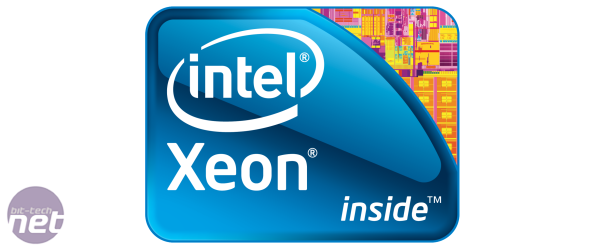Performance Analysis
Our media benchmarks, in this case the video encoding and multi-tasking tests, don't usually make full use of the many extra cores, physical or logical, that CPUs such as the E5-2670 provide. As such, the results here were a bit lacklustre, with the benchmarks favouring the overclocked Core i7-3930K - clearly fewer, faster cores are what are needed to come top in this area of the benchmarks, but that's not what the Intel Xeon E5-2670 is about - we thought we'd include them anyway though.Where the Intel Xeon E5-2670 really showed its muscle is in the heavily multi-threaded benchmarks. Cinebench R11 for example was a triumph, where it bettered every other stock speed CPU by a significant margin, and came very close to pipping the heavily overclocked X5680's in our EVGA SR2 system, that were operating 1.37GHz faster. For comparison, even the heavily overclocked Core i7-990X Extreme Edition and Core i7-3930K could barely muster half the speed of the new Xeons - worth thinking about if you spend a lot of time rendering.
While our Lightwave 9.6 frame-rendering benchmark saw the slower-clocked E5-2670s perform about the same as X5680s, the more demanding scene render benchmark in Lightwave 11 saw the E5-2670 shave over five minutes off the 23min 41s time recorded by two Intel Xeon X5690s - in other words, they were 25 per cent faster.
Click to enlarge
Terragen 2 was a similar story, and here, only the overclocked X5680s and the 4.7GHz Core i7-3930K were able to top the stock speed E5-2670's. Euler3D was perhaps the best result of all, with the E5-2670s outstripping even the overclocked X5680s by a long way, with a score of 14.804Hz, compared to 12.273Hz for the older Xeons. Power consumption shouldn't be viewed too competitively as we've used very different systems, but the E5-2670 drew roughly the same amount of power as our EVGA SR-2 system using two X5680s.
Conclusion
While there were a couple of blips in the performance of the Xeon E5-2670, these were mainly in older, less multi-threaded benchmarks, which are arenas best suited to more mainstream CPUs. The Xeon E5-2670 performed excellently in the types of applications it was designed to batter into submission, namely anything that involved rendering, animation or modelling. Here it was almost always significantly faster than previous generation Xeons, or at the very worst, about the same speed while having a stock speed several hundred megahertz lower - no mean achievement.
The fact that in some cases, it was significantly faster than heavily overclocked previous generation Xeons makes it a stunning CPU for workstation use, and while it demands the usual price premium for Intel's flagship line of CPUs, the time it can potentially save is likely to make it a no-brainer upgrade where time is money. Coupled with lower power draw to boot, Intel looks like it's on to a winner with the Xeon E5 series, and the E5-2670 definitely gets our vote if you're in the market for components to build a high-end workstation.

-
Value23 / 35
-
Features14 / 15
-
Speed47 / 50


MSI MPG Velox 100R Chassis Review
October 14 2021 | 15:04










Want to comment? Please log in.